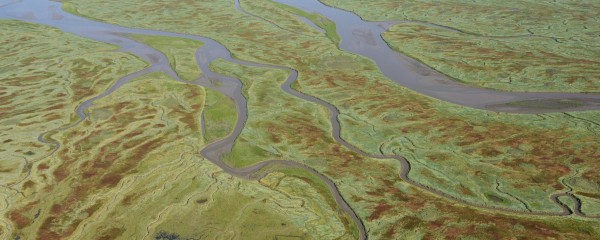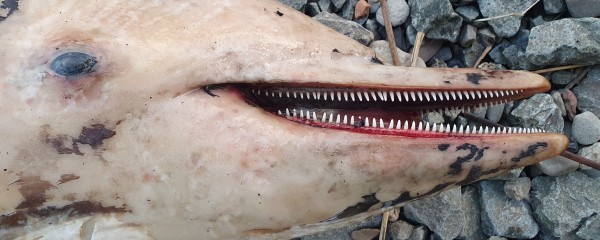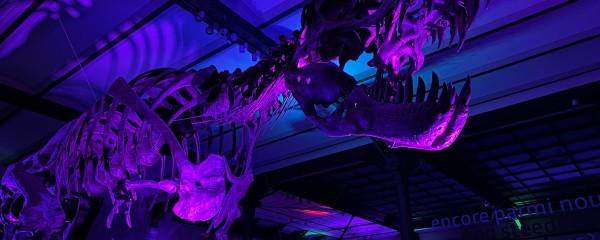Marine Forecasts serving Smart Aquafarming

The spatial combination of a sea farm - where mussels, oysters and seaweed grow - and passive fishing with innovative baiting techniques (using light, sound and odor) has been extensively tested off our coast for the past three years. Its success is good news, as both activities are allowed in wind farm zones, unlike traditional active beam trawling. RBINS developed tools that allow marine farm operators to better plan their activities.
Research into the possibilities of combining shellfish and seaweed farming with passive fishing, and how to make this passive fishing more efficient, was carried out in the VLAIO project SYMAPA. This project is coordinated by Brevisco, with Colruyt Group, AtSeaNova, Flemish Fish Auction, the Flanders Research Institute for Agriculture, Fisheries and Food (ILVO) and the Royal Belgian Institute of Natural Sciences (RBINS) as project partners. On 24 November 2022, the results were presented to the press and stakeholders in Ostend.
Minister for the North Sea Vincent Van Quickenborne was there: "We are developing the Belgian part of the North Sea as our country's power station and as an engine of innovation and self-sufficiency. Therefore, in addition to wind farms and floating solar panels, we also want to grow seaweed in the North Sea to produce biofuel. We have allocated €250,000 of research money for this. In the wind farms, we can produce food in addition to energy. Knowing that in Europe we import 70% of our sea food, one can also see that there is still a lot of potential for mariculture and passive fishing. Proteins extracted from farmed seaweed or farmed shellfish no longer need to be produced through animal husbandry or fishing. The results of the SYMAPA project show that important steps have been taken to make it not only technically and biologically but also economically feasible to combine not one, but two or even three activities in the same North Sea zone."
Fishing with Light, Sound or Odor

In passive 'pot fishing', fish and other marine animals are lured to and caught in pots on the seabed. This form of selective fishing has little bycatch, little to no bottom impact and little fuel consumption. The catches are of excellent quality: the pots are emptied regularly, the catch lives when collected on board, and is undamaged.
Fishing capacity can also be optimised by using light, sound and potentially also odor. This is shown by tests carried out by ILVO in the Westdiep zone off the coast of Nieuwpoort. By replacing the net of a standard cuttlefish pot with a fluorescent yarn, the scientists caught 10 times more cuttlefish. Other techniques that significantly increased the catch were the use of LED lights in pots for shrimp, eating sounds in pots for roundfish and the odor of banana in pots for flatfish.
Mattias Van Opstal and Jasper Van Vlasselaer (ILVO): "The study produced a toolkit of innovative techniques that fishermen can use to increase the catch in pots. Depending on the spot in the sea and the species present there, one or the other baiting technique will be more interesting for them."
Smart Aquafarming
The North Sea is a well-monitored ecosystem. RBINS but also ILVO and several European partners collect data to monitor the health of fish stocks and the wider marine ecosystem. RBINS also designed useful tools for planning sea voyages. A platform for five-day marine forecasts on tides, wind speeds, wave height, etc. already existed (the Marine Forecasting Centre) but thanks to SYMAPA and the EU-H2020 FORCOAST-project, there is now also a modelling tool to predict the best period for installing splash collectors. With those devices, growers collect stray seeds of mussels and oysters for subsequent rearing. Placing them too early can cause harmful fouling; placing them too late can ruin the seed harvest.
Léo Barbut and Geneviève Lacroix (RBINS): "Thanks to these modelling tools, we are another step closer to smart aquafarming. Operators of marine farms can use data to plan when to go out to sea for maintenance of their facilities, for seed collection and eventually for harvesting."
Optimisation of mussel, oyster and seaweed farming
Within SYMAPA, the partners are also committed to optimising cultivation techniques developed in previous projects. For instance, the cultivation technique for mussels was optimised to the nice result of 16 kg of mussels per metre. Thanks to seemingly minor adjustments to the installations, there is now also no damage during storms. The installations have been made stable and 'North Sea-proof'.
The cultivation of European flat oysters was also further optimised in SYMAPA. Quality flat oyster cultivation near the coast is possible but the rapid growth of unwanted organisms (fouling) on the baskets remains a technical obstacle for the time being that needs to be remedied for commercially viable cultivation. It hinders the flow of fresh seawater, periodically depriving the oysters of enough nutrients to grow.
For seaweed farming, the natural conditions in the North Sea remain technically challenging. In SYMAPA, both horizontal and vertical structures were tested. Horizontal ones perform fine on calm waves but in the North Sea the pulling force is too great. Therefore, a switch was made to vertical installations with loose suspension lines. Those structures are now being further tested in the ongoing EU-H2020 project UNITED, in which RBINS is also involved.
More information in this extended article.



